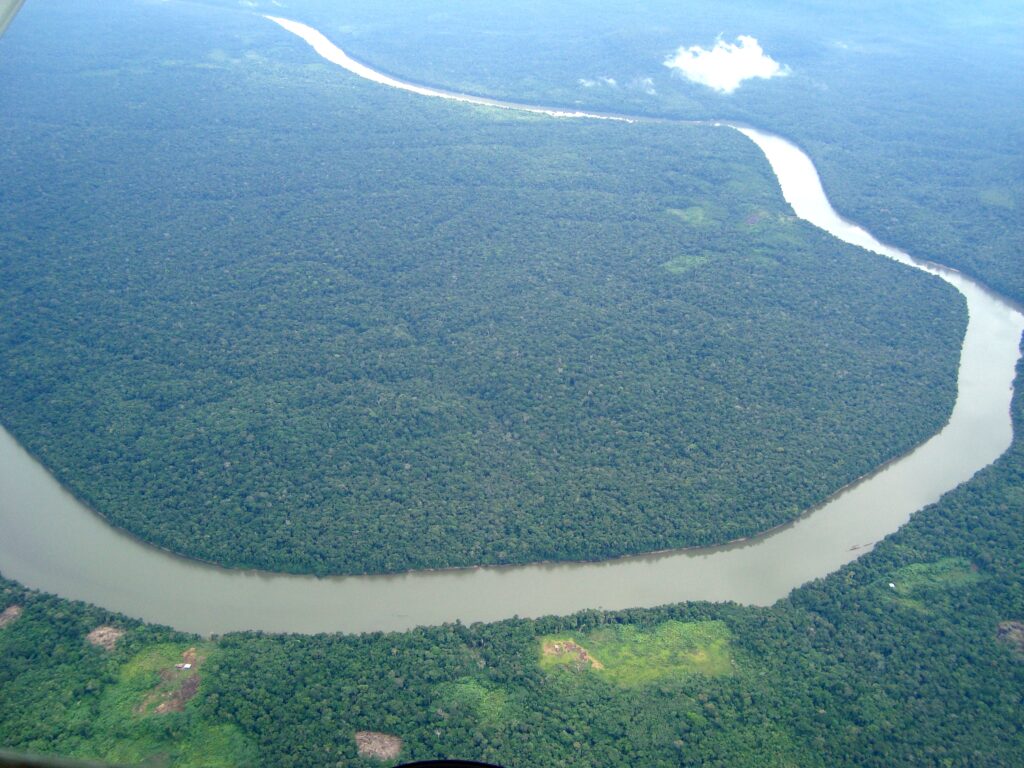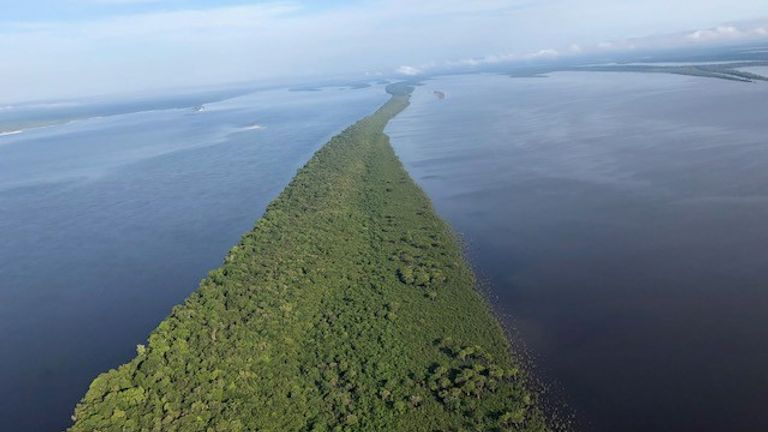Few places on Earth inspire as much awe and mystery as the Amazon Rainforest—a living, breathing masterpiece of biodiversity that stretches across nine South American countries, with nearly 60% of it located in Brazil. Often called the “lungs of the planet,” the Amazon produces around 20% of the world’s oxygen and is home to countless species of plants and animals found nowhere else on Earth.
But while many travelers explore the rainforest’s winding rivers and dense jungles, few get to witness its true grandeur—from above, in the endless expanse of green that touches the sky. From Brazil’s bustling cities to the tranquil canopies of the Amazon, this is a journey that reveals the breathtaking scale of one of the most vital ecosystems on our planet.
The Gateway: Manaus, the Heart of the Amazon
Your journey begins in Manaus, the capital of Brazil’s Amazonas state and the primary gateway to the rainforest. Nestled along the Rio Negro, Manaus is a blend of urban life and jungle wilderness. The city’s historic Amazon Theatre (Teatro Amazonas)—a pink, domed opera house built during the 19th-century rubber boom—serves as a striking reminder of the region’s rich cultural past.

From Manaus, travelers set out by riverboat, seaplane, or helicopter to venture deeper into the rainforest. As the urban sprawl fades, the view below transforms into an endless sea of emerald green—interrupted only by winding rivers and shimmering lagoons that reflect the sky like mirrors.
A Skyward Perspective: Seeing the Amazon from Above
Viewing the Amazon Rainforest from the sky is unlike any other experience on Earth. From the moment you rise above the treetops, the sheer scale of this vast ecosystem is almost beyond comprehension. The forest stretches endlessly to the horizon, its canopy forming a living carpet that breathes, moves, and hums with life.
From above, the “meeting of the waters”—where the dark Rio Negro merges with the sandy-colored Rio Solimões—is a mesmerizing sight. For nearly six kilometers, the two rivers flow side by side without mixing, due to differences in temperature, speed, and density. It’s one of nature’s most striking natural phenomena, best appreciated from the air.
Helicopter tours departing from Manaus or Tefé allow travelers to soar above this convergence and then drift over pristine sections of the jungle, revealing winding tributaries, hidden lakes, and villages nestled within the trees. For many, this perspective transforms the rainforest from an abstract concept into a living, breathing world.
The Canopy: Life Above the Ground
Descending into the forest canopy, visitors discover another world altogether. The Amazon’s treetops are home to 80% of the rainforest’s biodiversity, hosting colorful macaws, howler monkeys, and even tiny tree frogs that rarely touch the ground.
Many eco-lodges and research centers offer canopy walkways—suspended bridges that allow travelers to walk among the treetops safely. One of the most famous, the Amazônia National Park Canopy Walkway, stretches 275 meters long and reaches 40 meters above the ground. Standing here at dawn or sunset, you can witness the forest come alive with birdsong, sunlight streaming through the leaves like golden mist, and the distant calls of unseen creatures.
It’s a sensory experience—one that feels both peaceful and profoundly humbling.
Wildlife Wonders: The Amazon’s Living Treasures
The Amazon is home to an estimated 10% of all known species on Earth, many of which are still being discovered. Jaguars roam the dense underbrush, pink river dolphins glide through winding waterways, and vibrant macaws streak across the skies like flying jewels.
Exploring by river or air offers glimpses of these magnificent creatures in their natural habitat. On rare occasions, you might even spot giant river otters, sloths, or the elusive harpy eagle, one of the most powerful birds of prey in the world. Every journey, every glance into the forest, feels like an encounter with the extraordinary.
Sustainable Travel and Conservation
Witnessing the Amazon’s majesty also comes with a deep sense of responsibility. The rainforest faces growing threats from deforestation, illegal logging, and climate change, putting its fragile ecosystems at risk.
Many eco-lodges and tour operators in Brazil focus on sustainable tourism, ensuring that visits directly benefit local communities and help fund conservation efforts. By choosing responsible travel options—such as carbon-neutral tours or locally owned accommodations—visitors can help protect the Amazon while still experiencing its wonder.
The Sky as a Mirror of Life
As the sun sets over the rainforest, the sky turns into a palette of orange, violet, and gold. From above, rivers gleam like silver threads weaving through a green tapestry. The sound of the jungle rises like a living symphony—frogs, birds, and insects blending into a rhythm older than time itself.

It’s in these moments, high above the canopy or drifting quietly along the river at dusk, that travelers truly understand the Amazon’s spirit. It’s not just a place; it’s a heartbeat—a reminder of our planet’s incredible beauty and fragility.
A Journey Beyond Adventure
Traveling from Brazil’s vibrant cities to the skies above the Amazon Rainforest isn’t just a trip—it’s a pilgrimage into the essence of nature. It’s about witnessing one of Earth’s last great wildernesses from perspectives few ever see and feeling deeply connected to a living system that sustains all life.
Whether you explore by air, river, or foot, one thing remains certain: the Amazon changes you. You leave not just with photographs, but with a renewed appreciation for the delicate balance of our world—and the urgent need to protect it.
From Brazil to the Amazon’s boundless sky, the journey reminds us of something profound: in the heart of the forest, we find the pulse of the planet—and a reflection of our own.






